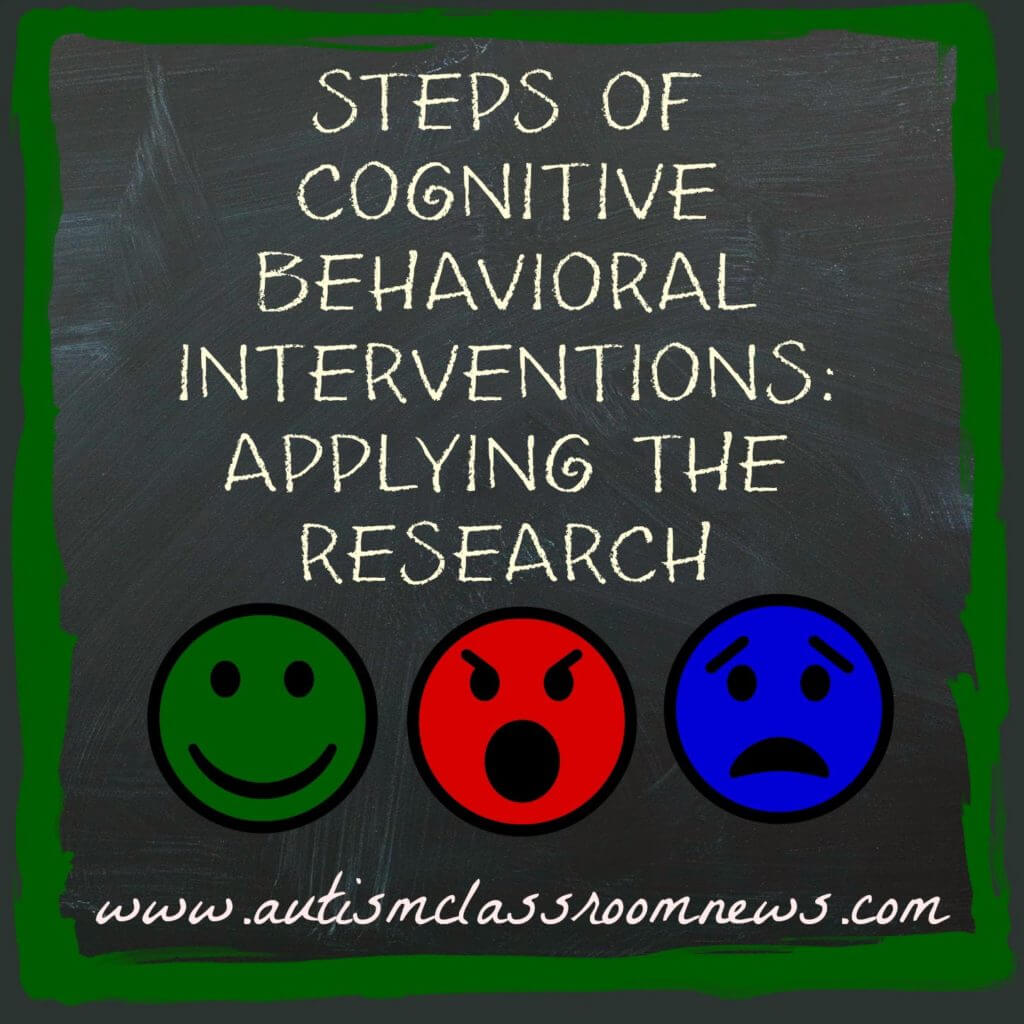I have been talking about the research behind the evidence-based practices report from the National Professional Development Center. To read the other posts about the report and other interventions, click HERE.
In the last post I talked cognitive behavioral interventions (CBI) and what the research indicated they could do for individuals on the autism spectrum. In this post, I want to talk about the common steps of CBI. This summary is based on the work from the article by Sofronoff, Attwood, Hinton, & Levin, (2006) that is referenced below as well as some of my clinical experience. Keep in mind that CBIs like the one described here are not something I would expect to see done in the classroom. They are typically something that is implemented clinically rather than in education, however some school counselors may use them. With that in mind, however, we do use a number of the elements of CBIs in social skills instruction and in teaching anger management, anxiety relief and emotional control. Therefore I wanted to give you an overall framework and then I will follow up with posts about tools and strategies we do use in the classroom to assist students on the spectrum. This post is not designed to teach you do CBI but instead to help you understand what it is based on the research. So, with all that said, let’s get started with the steps.
1. Determining the type of problem and the need for intervention.
2. Education
about the emotions
In this stage, the focus of intervention (individual or group) is on why we have emotions,advantages and disadvantages of emotions, and identification of emotions in the student themselvesand in others. This stage also focuses on helping the individual recognize cues and physical changes that are associated with different emotions in themselves. They also work to develop a method for measuring and monitoring the emotions. This might include the use of a stress or anger thermometer or the 5-Point Scale. It’s also a stage that focuses on developing a common language about emotions. For instance, one of the things that we see with students on the spectrum is black and white thinking–all positive or all negative. Consequently, they may express strong negative emotions in a way that is perceived as threatening to others (e.g., I want to kill him instead of I am very angry with him). The use of tools like Superflex to develop common language for the cognitive misattributions and emotions can be used to do this.
3. Cognitive Restructuring
This is actually a whole treatment in itself, but the primary focus is identifying cognitive errors and developing new scripts and ways of thinking. It involves challenging the black and white or rigid thinking (that some folks call poison thoughts) and helping the individual realize that they are errors in thinking. For instance, a student might think because a friend doesn’t sit with them at lunch that the person hates them or that they, the student, have no friends. Restructuring would involve helping the student reframe the thought of “everyone hates me” to “My friend must have wanted to sit by someone else today. Maybe tomorrow he will sit with me.” During this phase they also develop a methods to help recognize these thoughts and reframe them like scripts and more flexible thinking.
4. Stress Management
In this component, the participant learns to recognize cues of anxiety or building frustration, methods for calming like progressive relaxation, breathing, and recognition of triggers for stress.
5. Self-Reflection
Here the participant begins to learn to recognize progress that has been made, set goals for further progress and discuss strengths and weaknesses.
6. Practice, Role Playing, Modeling
This component includes practicing the tools that have been taught, role playing situations to help the individual cue needed strategies at appropriate times and essentially help the individual learn to use the strategies that have been taught in more natural situations.
So as you can see there are a variety of tools like relaxation training, self-monitoring, and emotional identification that many of us use in classrooms with these students frequently. I will focus on some of these tools in the next post.
Until next time,








